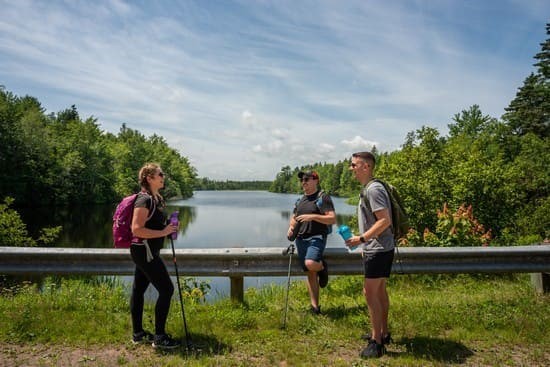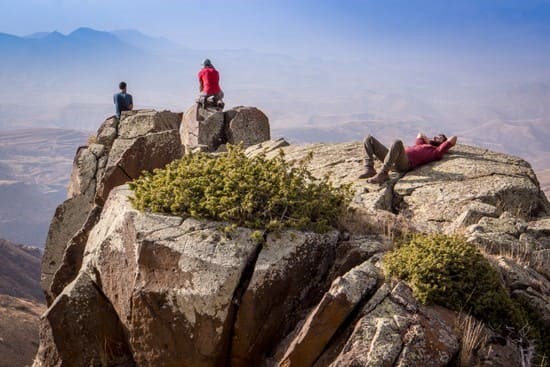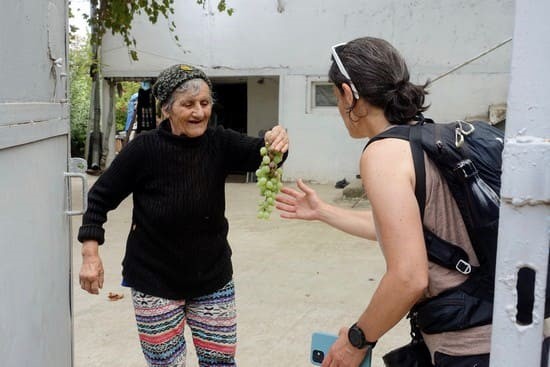The idea of a walking holiday — a long-distance journey on foot, during which you lodge overnight and carry just enough clothing, food, and water for each day’s stretch — has long been popular in Europe. But within the past few years, these pilgrimage-style walks have sprung up all over the world.
After the pandemic years, embarking on a pilgrimage has new
meaning, whether you’re seeking discovery, a sense of purpose or to learn what
you are capable of. “What might have seemed like a luxury before feels like a
necessity now,” said Dorji Dhradhul, director general of Bhutan’s tourism
council and chair of the association behind the new Trans Bhutan Trail, about
the rising popularity of long trails. While taking a week or more off for a
long walk might have felt like an indulgence before, Dhradhul believes more
people are using travel to slow down and reflect.
The real power of traveling on foot is that it encourages
interaction. “Many of us will go to great lengths to avoid speaking with
strangers, and this behavior has spilled over from our daily lives to the way
we travel,” said Robin Lewis, who has walked the entire length of the Michinoku
Coastal Trail, a 1,025km route that traverses Japan’s northeastern Tohoku
region. “These experiences remind us that the best way to know a place is
through its people.”
As you are preparing for your next trip, plan for
spontaneous encounters. Pick a starting point and an end, line up a few stops
and stays along the way, and let the rest follow. Here are seven new treks to
keep in mind.
The Pekoe Trail, Sri LankaBefore Sri Lanka became the tea capital of the world, its
mist-shrouded forests were dotted with coffee plantations. In 1867, a few years
before a disease largely wiped out that crop, a Scotsman named James Taylor
developed the country’s first commercial tea estate. Former coffee growers soon
began traveling to the estate to learn how to cultivate and process tea,
starting what would become a series of trails that formed the industry’s
transportation network.

More than a century later, those routes have been recovered
to make the Pekoe Trail, a 300km path that will open in July. Its development
was funded by the EU and the US Agency for International Development to help
boost Sri Lanka’s tourism industry in the aftermath of the 2019 Easter
bombings, and the terrorist attacks in Colombo, the capital, which led to a 70
percent drop in visitor numbers from the year before. The trail connects 80
hamlets and villages across the island’s mountainous Central and Uva provinces,
some in remote areas that see fewer tourists, others near historic sites,
including Taylor’s Loolecondera Estate and the famed Nine Arch Bridge, a scenic
railway overpass and architectural wonder near the town of Ella.
At the route’s northern end is the Buddhist stronghold of
Kandy, a two and a half hour drive from Bandaranaike International Airport; at
the other, the highland community of Nuwara Eliya. The journey was designed to
take a leisurely 22 days, so that visitors could have half days to fill as they
would like, whether with long lunches of kottu roti, naps in restored
colonial-era bungalows, or afternoons sampling teas and swimming in waterfalls.
The Island Walk, Prince Edward Island, Canada
When Bryson Guptill walked Portugal’s network of hiking
trails known as the Rota Vicentina in 2019, its rolling hills, soaring cliffs
and stuck-in-time villages reminded him of Prince Edward Island, where he had
been living for three decades. He wondered whether it would be possible to
re-create the experience in his backyard. Over a month, he walked 700km around
the entire island province, identifying ways to link up existing Confederation
Trail routes, dirt roads and beach walks. Two years later, he introduced his
map for the Island Walk, a coastal path divided into 32 daylong sections, which
range from 19km to 24km.

Prince Edward Island, which is about the size of Delaware,
is Canada’s smallest province, but it’s also the most densely populated. You
can’t stroll more than an hour without seeing a country home or for more than
24km without coming upon a seaside village, many of which have charming
bed-and-breakfasts and ocean-view restaurants serving oysters.
If you do not want to walk the entire trail, head north to
experience the province’s only national park and scenes that inspired L.M.
Montgomery’s “Anne of Green Gables” books. For warm-water beaches, pastoral
landscapes, and lobster suppers, explore the east. For a taste of Acadian
culture and sweeping views of the Northumberland Strait, go west. And for more
action, visit the south, where the fishing village Victoria-by-the-Sea has
become an artists’ enclave, with a chocolate factory, theater, and pottery
studios.
The Transcaucasian Trail, Armenia, Georgia and Azerbaijan
When Tom Allen, a British adventurer and filmmaker, first
moved to Armenia in 2008, he looked up at the peaks of the Lesser Caucasus
Mountains and saw a hiker’s dream. Across the border in Georgia, Paul Stephens,
who was volunteering with the US Peace Corps, had begun envisioning a trekking
route across the entire Caucasus range. When Allen went to purchase the domain
name transcaucasiantrail.org in 2015, he found that it had already been
registered — to Stephens. The two met and got to work.
In December 2021, after years of building new routes and
unearthing ancient footpaths, the pair, in collaboration with the nonprofits
Hike Armenia and Trails for Change, debuted the first section of the
Transcaucasian Trail: 860km through Armenia. The north-south path showcases the
diversity of both the country’s landscape — bucolic pastures, red-earth
formations, cloud forest — and its history, with stops at ancient Christian
monasteries, medieval fortresses and Silk Road-era roadside inns. Since then,
214km in Georgia and 200km in Azerbaijan have opened.
Guesthouses, often modest extensions of people’s homes, have
started popping up along the route. Expect feasts of grilled meats, salads and
khachapuri, a traditional cheese-filled bread, plus leftovers packed for lunch
on the trail.
The region’s history of conflict, including recent tensions
between Armenia and Azerbaijan over the Nagorno-Karabakh region, has created
challenges for the trail’s development. While it doesn’t currently pass through
any breakaway territories or areas of conflict, visitors should be aware of
these zones and check government warnings before travel.
The Michinoku Coastal Trail, Japan
After the 2011 earthquake and tsunami that devastated the
Tohoku region of northeastern Japan, the country’s environment ministry saw an
opportunity: Bringing more visitors to the sparsely populated area could help
bolster the reconstruction efforts. A decade later, a hiking trail hugging the
area’s coastline has helped that effort.

Connecting the city of Hachinohe in Aomori prefecture, near
the northern tip of Honshu, Japan’s main island, with Soma in Fukushima
prefecture, 1,025km south, the Michinoku Coastal Trail winds through tiny
fishing villages, white-sand beaches and chalky black cliffs that rise from the
Pacific Ocean. Along the way there are already restaurants offering discounts
to hikers and accommodations including hotels, traditional bed-and-breakfast
inns called ryokans and more affordable home stays known as minshuku.
Local residents serve as informal trail angels, offering
hikers cups of tea and inviting them into their homes. All along the route are
signs promoting fisherman-run boat tours, educational hiking tours and in-home
cooking classes. If the economic gain is important, so too is the emotional
benefit. “Not only are visitors able to hear firsthand about the resilience of these
communities, but there’s also a lot of catharsis that follows from sharing
their stories,” said Robin Lewis, creator of Michinoku Trail Walker, a free
guide to the experience.
The High Road, Massachusetts
The Berkshires, in western Massachusetts, have long
encouraged contemplative walking. They’re said to have inspired Edith Wharton
and Herman Melville, and the Appalachian Trail has wound through them since the
1930s. Now, a new long-distance path, the High Road, will provide a slow-paced,
inn-to-inn experience that will eventually traverse the entire region.
The first segment, which opened in 2021, runs 12km from the
vibrant arts-centric city of Pittsfield to the traditional New England town of
Lenox. It follows most of the Yokun Ridge, a series of peaks covered in
deciduous forest that offer views of red-barn farms, bucolic ponds and 1,064km
Mount Greylock. The next portion, expected to be completed by 2025, will
traverse southern Berkshire County, from the wetlands of Threemile Hill to the
267-acre Thomas and Palmer Brook reserve, and link up to the charming town of
Great Barrington.
Behind the effort is the Berkshire Natural Resources
Council, which is using existing preserves as footholds for the route. Half the
trail is expected to be complete in the next three to five years, and as each
new segment opens, so will tributary paths that connect it to nearby villages.
Along with providing easy access to pristine wilderness, the High Road will
showcase the region’s cultural highlights, allowing walkers to incorporate
afternoons at destinations like Tanglewood and Jacob’s Pillow.
The Trans Bhutan Trail, Bhutan
The legend of Garp Lungi Khorlo has been passed down for generations
in Bhutan. He was known as the fastest court messenger in the kingdom, and was
said to have once traveled 80km on foot in a single day. The trail he would
have traveled was, for centuries, the only link between the country’s nine main
districts, used also by monks, pilgrims, royalty, and traders.
The revitalized route opened in September as the 402km Trans
Bhutan Trail. Walking it can feel like traveling through time — many villages
along the Trans Bhutan have been isolated since the introduction of highways in
the 1960s. Expect to pass intricate chortens, dome-topped stone structures that
once acted as trail markers and shelters for travelers; to hike through dense
forests that open up to views of the Himalayas; and to hear chants echoing from
monasteries lined with colorful prayer flags.
Days average 14km, and most end at a village with a home
stay or a well-appointed campsite, plus the occasional luxury hotel (Six Senses
has five properties along the trail, and Como Hotels and Resorts has two). The
western sections of the path are dotted with tourism council-certified hotels
and guesthouses, the only properties permitted to host international visitors.
Along with requiring travelers to pay a daily sustainable development fee,
which increased to $200 from $65 last year, the tourism council makes it
compulsory to hire a guide.
The Walk of Peace, Slovenia and Italy
As described in Ernest Hemingway’s “A Farewell to Arms,” the
Soca Valley is a place of catastrophe, unrecognizable from today’s serene setting
of roaring waterfalls, deep gorges and turquoise rivers. Still, throughout the
corridor, which connects northwest Slovenia to Italy’s Adriatic coast, are an
untold number of vestiges from World War I’s Isonzo Front, where a dozen
battles between the Kingdom of Italy and the Austro-Hungarian Empire took close
to 1.5 million lives.
In an effort to showcase this history, the Soca Region
Foundation has turned the former front line into a 310-mile network of treks.
The main route, which opened in 2020, has expanded to include offshoot paths to
marked historical sites. Starting in Slovenia’s Julian Alps, within the
spectacular Triglav National Park, the main trail passes the mountain town of
Bovec and the Ravelnik, an outdoor museum of trenches and tunnels, before
spilling through the Soca Valley, where more than 200 World War I monuments
stand. There, the tiny town of Kobarid is home to the Walk of Peace Visitor
Center, a starting point for a self-guided history tour of the area.
The route then follows the Slovenia-Italy border and the
Soca River into the hilly wine country of Slovenia’s Brda region. Next, a
segment takes you through the Kras region, where thousands of limestone caves —
many once used as hide-outs by troops — dot the plateau. The route finally
reaches the Italian coast at the resort town Trieste. Walking an average of
16km a day makes this a 30-day expedition. Along the way, family-run homestays
and apartment rentals offer a place to stay at the end of most of the trail’s
stages.
اضافة اعلان
Read more Travel
Jordan News







